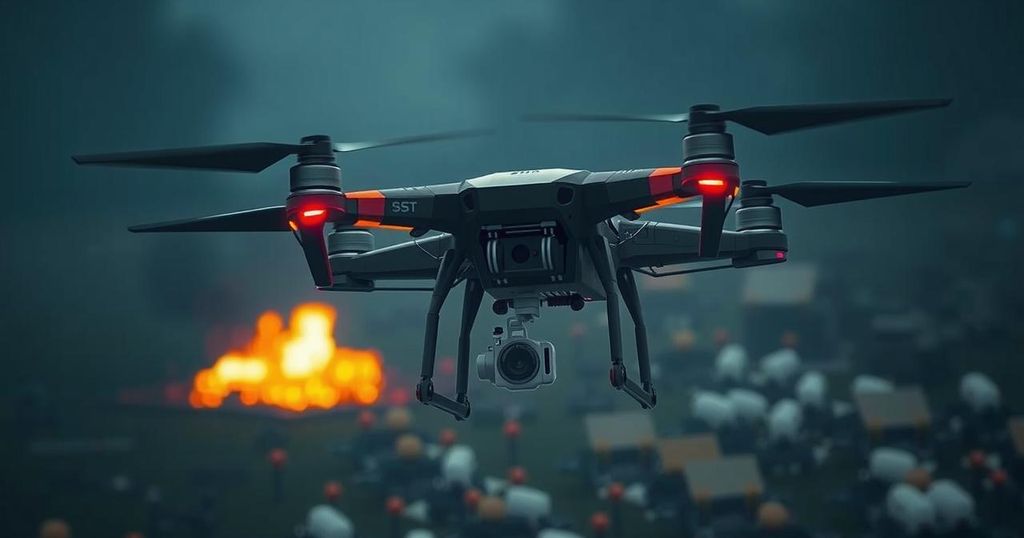The Ascendancy of Drones in Modern Warfare and Its Implications for Defense Strategy
The article explores the rise of drone technology as a dominant force in modern warfare, as articulated by a former Royal Marines Colonel. He emphasizes the potential impact of drones on military strategy and the necessity of increased defense spending in response to evolving threats, particularly highlighting Russia’s recent use of drones against Ukraine. The upcoming Strategic Defence Review is identified as a critical opportunity to reassess military capabilities and funding.
The evolving landscape of warfare is witnessing a significant shift as drones emerge as pivotal instruments on the battlefield, surpassing traditional military roles. A former Royal Marines Colonel, who has completed five operational tours in Afghanistan, articulates that the integration of drone technology could fundamentally alter conflict dynamics. He likens this development to historical military milestones affecting the roles of different branches, emphasizing the necessity of a comprehensive review in light of technological advancements. The Colonel highlighted that the impending Strategic Defence Review (SDR) will be crucial for adapting to this new era of warfare, indicating that technological support in combat may take precedence over troop deployment. Recent intelligence updates from the Ministry of Defence reveal an alarming increase in Russia’s deployment of approximately 2,000 “kamikaze” drones against Ukraine, highlighting a steady escalation in drone warfare tactics. This trend points to significant Russian investments in unmanned aerial vehicles (UAVs) and their potential consequences in ongoing conflicts. Meanwhile, Ukraine is enhancing its drone capabilities, executing operations well beyond its borders into Russian territory. As NATO member states confront increasing security threats, Defence Secretary John Healey acknowledges the pressing need for enhanced military funding, although he refrains from committing to a definitive timeline for achieving a defense spending target of 2.5% of GDP. With the promise of an additional £2.9 billion for defense in the coming year and ongoing support for Ukraine, the government is positioned to address modern security challenges.
This article discusses the emerging dominance of drone technology in modern warfare, suggesting that it may soon surpass traditional military assets. Historically, developments such as the machine gun, submarine, and jet engine have significantly altered warfare dynamics. The Royal Marines Colonel’s perspective offers insight into the current strategic requirements that nations must consider, particularly as global military investments shift towards advancements in unmanned aerial systems. Additionally, the implications of recent increases in drone usage by Russia and Ukraine are explored, underlining the urgency for NATO allies to bolster defense spending in response to escalating threats.
In conclusion, drone technology is poised to redefine modern warfare, as evidenced by significant operational shifts in conflicts like that between Russia and Ukraine. The forthcoming Strategic Defence Review may play a pivotal role in addressing these transformations and enhancing military preparedness. The lack of a clear timeline for increased defense spending from the UK government poses a challenge, yet the commitment to bolster funding remains crucial in confronting the new security landscape dominated by drone warfare.
Original Source: www.standard.co.uk




Post Comment